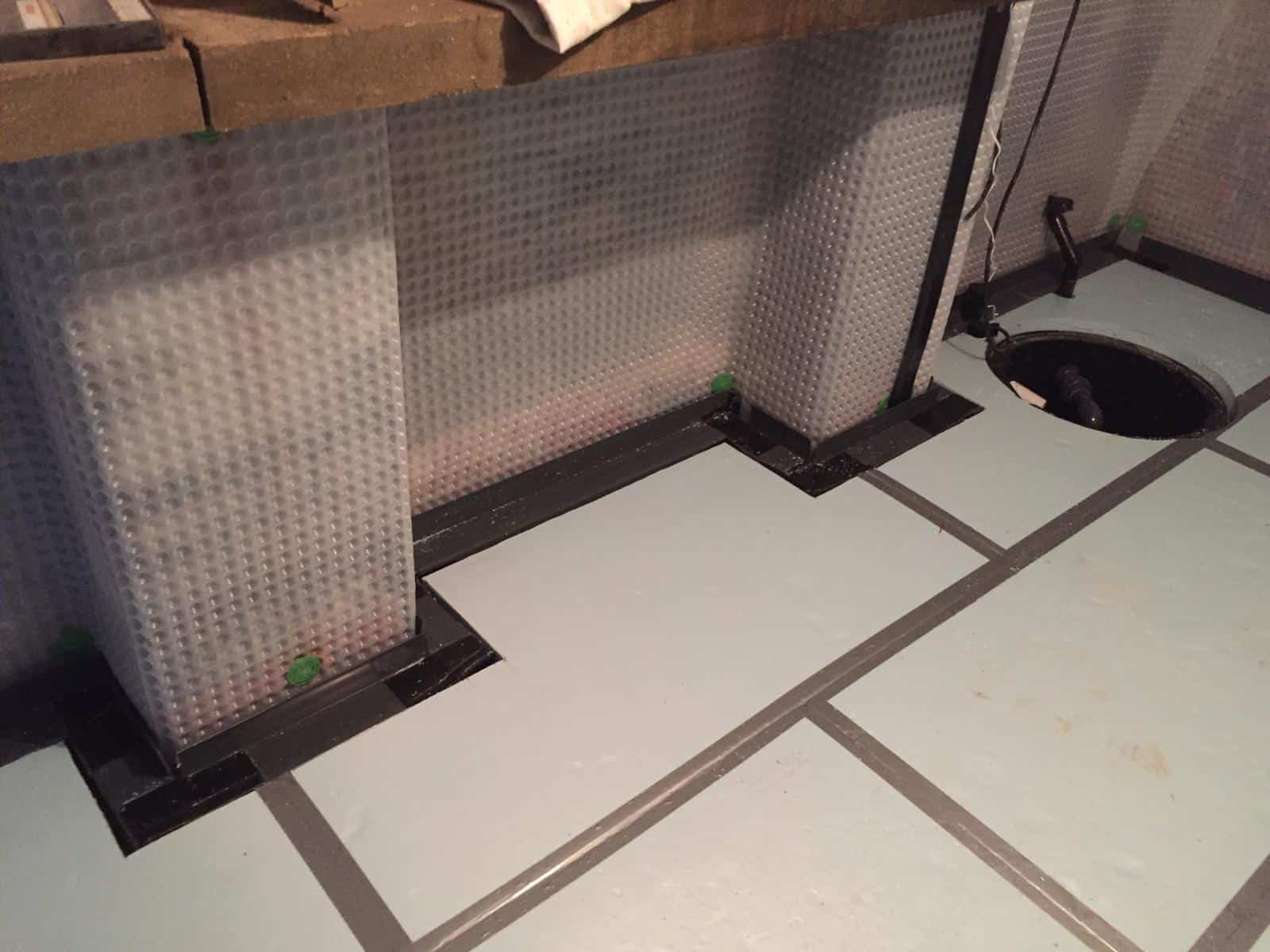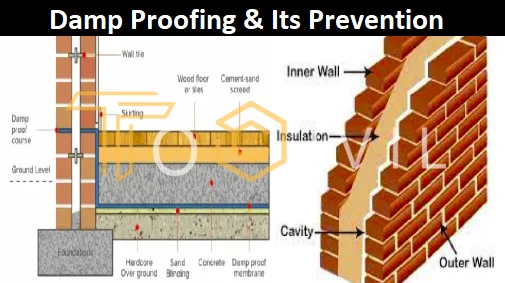Surprising signs you need damp proofing newcastle services now
Surprising signs you need damp proofing newcastle services now
Blog Article
Checking Out the Numerous Techniques and Solutions for Effective Damp Proofing
Dampness in structures postures significant challenges to both architectural honesty and interior air quality. Different methods and options have actually emerged to fight this prevalent concern. From traditional damp-proof membranes to innovative chemical treatments, each method provides special benefits. Comprehending these choices is essential for effective wetness control. Choosing the right solution depends on specific structure problems and requirements, triggering additional exploration into the most reliable wet proofing methods offered.
Comprehending the Root Causes Of Moisture
Although dampness can occur from numerous resources, comprehending these causes is important for efficient removal. Commonly, wetness originates from three key sources: climbing moist, passing through damp, and condensation. Increasing moist takes place when groundwater travels up-wards with porous products, such as block or stone, typically because of a lack of an effective obstacle (damp specialist newcastle). Passing through moist is generally triggered by external variables, including roof leakages, faulty rain gutters, or damaged walls, enabling water to penetrate a residential or commercial property. Condensation, on the various other hand, arises from excess moisture airborne, commonly aggravated by poor air flow and temperature level differences, causing water droplets basing on surfaces. Recognizing these underlying issues is crucial, as each kind of dampness calls for a tailored method for removal. Correct assessment aids in identifying the most reliable solutions, eventually guarding the structural integrity of a building and enhancing interior air top quality
Traditional Damp-Proof Membranes

Chemical Damp-Proofing Solutions
Chemical damp-proofing solutions offer a cutting-edge method to avoid wetness invasion in buildings. These methods typically include the application of fluid chemicals that penetrate stonework and form a barrier against increasing wet. Frequently utilized chemicals include silanes, siloxanes, and other water-repellent agents that react with surface materials to develop a hydrophobic layer.The application process usually needs drilling openings right into the wall surfaces, injecting the chemical service, and enabling it to treat. This method is particularly advantageous for older structures where traditional damp-proof membranes might be unwise. Chemical damp-proofing can be less disruptive and more affordable than substantial remodelling projects.While efficient, these solutions depend on proper application and environmental conditions for peak performance. damp specialist newcastle. Normal upkeep and surveillance are necessary to ensure the long life of the damp-proofing therapy. On the whole, chemical damp-proofing stands for a versatile option for protecting buildings versus moisture-related damages
Dental Caries Wall Surface Building Strategies
Dental caries wall surface construction methods provide many benefits, especially in moisture control and energy effectiveness. By incorporating an air gap in between two layers of masonry, these walls properly reduce water access while boosting insulation. This combination not only protects frameworks from dampness however likewise adds to reduced energy consumption.
Benefits of Tooth Cavity Wall Surfaces
When considering effective damp proofing methods, the benefits of cavity walls stick out prominently. Tooth cavity walls contain two different layers, creating an air void that properly lowers dampness penetration. This style reduces the risk of moisture, as the external wall functions as a barrier versus rainfall and water ingress. Additionally, tooth cavity walls improve thermal insulation, which adds to power efficiency by decreasing warmth loss. They also provide audio insulation, assisting to produce a quieter indoor environment. Moreover, the air gap permits ventilation, which aids in dampness control and lowers the likelihood of mold growth. These benefits not only boost the total comfort of a building however likewise add to its durability and structural integrity.
Dampness Control Approaches
Efficient wetness control methods are essential in cavity wall building and construction to ensure lasting security versus moisture. One primary method entails the incorporation of weep holes, which promote water drainage from the tooth cavity, avoiding accumulation. Furthermore, making use of breathable membranes can help manage moisture levels while enabling entraped vapor to escape. Proper positioning of insulation is also crucial, as it should not block drain paths. Making sure that the external leaves of the tooth cavity wall surface are constructed with waterproof materials enhances total sturdiness. Regular upkeep checks are necessary to identify any type of blockages or damages early, securing the framework's honesty. Eventually, a combination of these methods creates a robust protection against wetness invasion in dental caries wall surfaces.
Insulation and Energy Efficiency
Insulation plays a crucial duty in improving power effectiveness within tooth cavity wall surface building. By including shielding products, these walls develop a thermal obstacle that reduces warm loss and minimizes power usage. Effective insulation not just aids preserve a stable indoor temperature level yet additionally mitigates the risk of moisture, as it prevents condensation within the wall tooth cavity. Different strategies, such as the use of rigid foam boards or mineral woollen, can be utilized to attain perfect insulation performance. In addition, proper setup is necessary to ensure that spaces and gaps are reduced, which can or else compromise energy effectiveness. Inevitably, a well-insulated cavity wall contributes considerably to general sustainability and decreases heating and air conditioning expenses for home owners.
Exterior Damp Proofing Approaches
Outside wet proofing approaches are vital for protecting structures from wetness infiltration. 2 effective techniques include the application of water resistant membrane layers and the installation of French drains. These remedies aid alleviate water accumulation and maintain the stability of buildings.
Waterproof Membrane Layer Application
While numerous approaches exist for protecting against moisture access, the application of waterproof membrane layers continues to be a highly efficient external damp proofing strategy. These membrane layers are generally made from products such as polyethylene, rubber, or changed bitumen, offering a robust barrier versus water infiltration. The installment procedure involves applying the membrane to the external surface areas of foundations or walls, making certain total insurance coverage to stop leakages. Proper adhesion and securing at joints are important to maximizing effectiveness. Water resistant membranes can be used in different kinds, including fluid coverings and sheet membrane layers, permitting versatility based upon the certain requirements of the framework. This method not only protects structures from dampness however also boosts their long life and architectural honesty.
French Drainpipe Setup
One effective method for handling groundwater and stopping wetness accumulation around a structure's structure is the installation of a French drainpipe. This drain system includes a trench loaded with gravel and a perforated pipeline that redirects surface water far from the structure. Appropriate installation calls for careful preparation, making sure that the drain inclines away from the structure to promote excellent water circulation. Additionally, the area of the drainpipe is essential; it should be positioned in areas vulnerable to pooling or excess moisture. Normal maintenance, including clearing up particles from the crushed rock and guaranteeing the pipe stays unhampered, is crucial for lasting performance. Eventually, a well-installed French drainpipe can greatly lower the threat of water-related issues in foundations and basements.
Inside Waterproofing Strategies
Interior waterproofing methods are important for shielding a structure's interior from wetness infiltration and prospective water damages. These approaches generally involve the application of customized products and methods created to produce a wetness barrier within the framework. One usual technique is making use of water-proof coatings or sealers on walls and floorings, which prevent moisture from passing through surfaces.Additionally, mounting interior drainage systems, such as sump pumps, can successfully handle water accumulation in basements and creep rooms. Another approach involves using vapor obstacles, which are mounted to hinder moisture motion from the ground right into living spaces.Moreover, attending to any splits or voids in walls or foundations with ideal sealants ensures a complete defense versus water invasion. By applying these interior waterproofing methods, home owners can greatly minimize the danger of mold development, architectural damages, and various other moisture-related problems. Correct implementation of these techniques is necessary for long-lasting protection and structure integrity.
Regular Upkeep and Assessment Practices
Normal maintenance and assessment techniques are crucial for ensuring the long-term efficiency of moist proofing services in any kind of structure. Routine checks enable homeowner to determine early indications of wetness intrusion, such as peeling paint, mold and mildew growth, and moldy odors. These signs can signal underlying concerns that require prompt attention.Inspections must be conducted at the very least each year, concentrating on prone areas like cellars, creep rooms, and outside wall surfaces. During these analyses, homeowner must analyze sealers, drainage systems, and ventilation to validate they function correctly.Additionally, keeping rain gutters and downspouts is crucial, as clogged up systems can lead to water accumulation near the structure. Executing a normal maintenance timetable, along with prompt repairs, can considerably expand the lifespan of moist proofing procedures and safeguard the structural integrity of the structure. Proactive measures eventually add to the total health and wellness and safety and security of the living atmosphere.
Often Asked Concerns
How Much Time Does Damp Proofing Commonly Last?
The duration of wet proofing effectiveness varies, typically lasting between 20 to half a century. Variables such as application high quality, ecological conditions, and upkeep techniques considerably affect the longevity of the damp proofing therapy.

Can I Damp Evidence My Home Myself?
The individual considered the expediency of DIY damp proofing. With correct research study and the appropriate products, it is feasible. They likewise recognized the importance of specialist advice to assure lasting effectiveness and avoid future issues.
What Are the Signs of Inefficient Damp Proofing?
Signs of inadequate wet proofing consist of relentless moldy odors, noticeable mold development, peeling paint, damp spots on walls, and timber decay - mould removal newcastle. House owners ought to resolve these problems quickly to avoid additional damage and health and wellness concerns
Does Damp Proofing Affect Indoor Air High Quality?

Just How Much Does Expert Damp Proofing Price?
Professional moist proofing prices vary substantially, normally varying from $1,000 to $5,000 depending upon the building's size, the degree of the wet issue, and selected approaches. Each situation needs a customized analysis for accurate pricing. Frequently, dampness stems from 3 primary sources: increasing moist, passing through damp, and condensation. When considering efficient moist proofing approaches, the benefits of cavity walls stand out prominently. Outside moist proofing approaches are essential for protecting structures from moisture infiltration. While different techniques exist for stopping dampness access, the application of water-proof membrane layers continues to be a highly efficient website outside moist proofing method. Indicators of inadequate wet proofing consist of relentless musty odors, noticeable mold and mildew development, peeling off paint, moist patches on walls, and wood degeneration.
Report this page